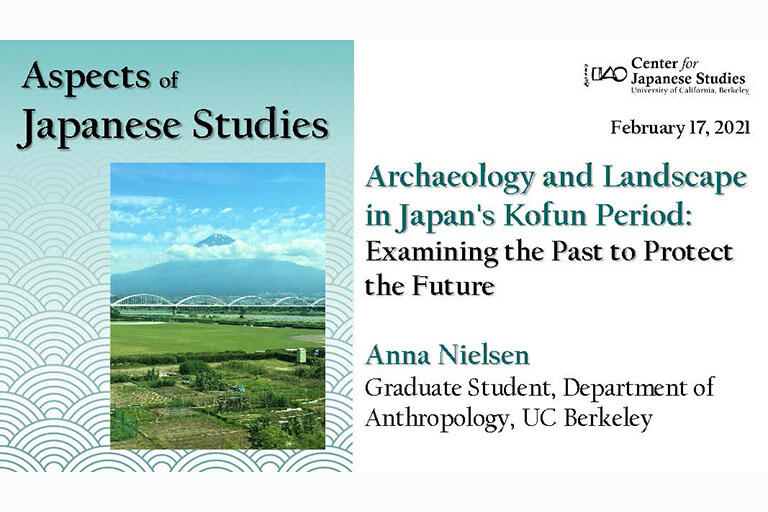 February 17, 2021 | 5-5:30 p.m. | Online - Zoom Webinar
February 17, 2021 | 5-5:30 p.m. | Online - Zoom Webinar
Speaker: Anna Nielsen, Graduate Student, Dept. of Anthropology, Anthropology, UC Berkeley
The Japanese archipelago, with its rugged landscapes of mountains and rivers, is prone to many unexpected catastrophes involving water, including floods, typhoons, and tsunamis. In the Kofun period (about 250-550 CE), early state-level societies developed increasingly complex mechanisms to prevent or mitigate natural disasters that threatened them.
Using both traditional and cutting-edge techniques to peer into the past, we can explore several intriguing questions. How did ancient people develop new technologies to control water and build the first centralized polities in the Japanese archipelago? In what ways can we see traces of the past in the modern landscapes of Japan? How can we apply what we learn to environments we see around the world? And most importantly, how can knowledge of the past help us understand and prevent water-related natural disasters that occur today?
Anna Nielsen is a PhD student studying Japanese archaeology at UC Berkeley. Ever since she was a child, she planned to become an archaeologist, but she first became interested in Japan as a high school student when she saw the effects of the 2011 Tōhoku earthquake, tsunami, and nuclear disaster. The question “What can I do to help?” started her on a journey that would take her to several new countries, immerse her in Japanese language, and make her feel profoundly grateful that she is lucky enough to study one of the most fascinating subjects in the world.

